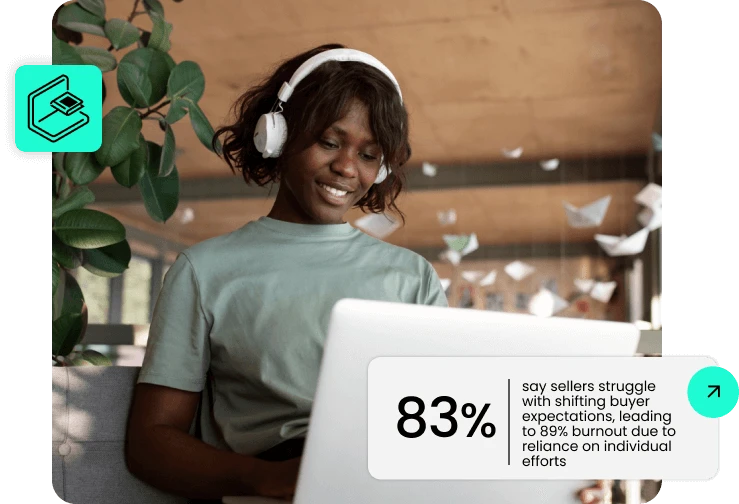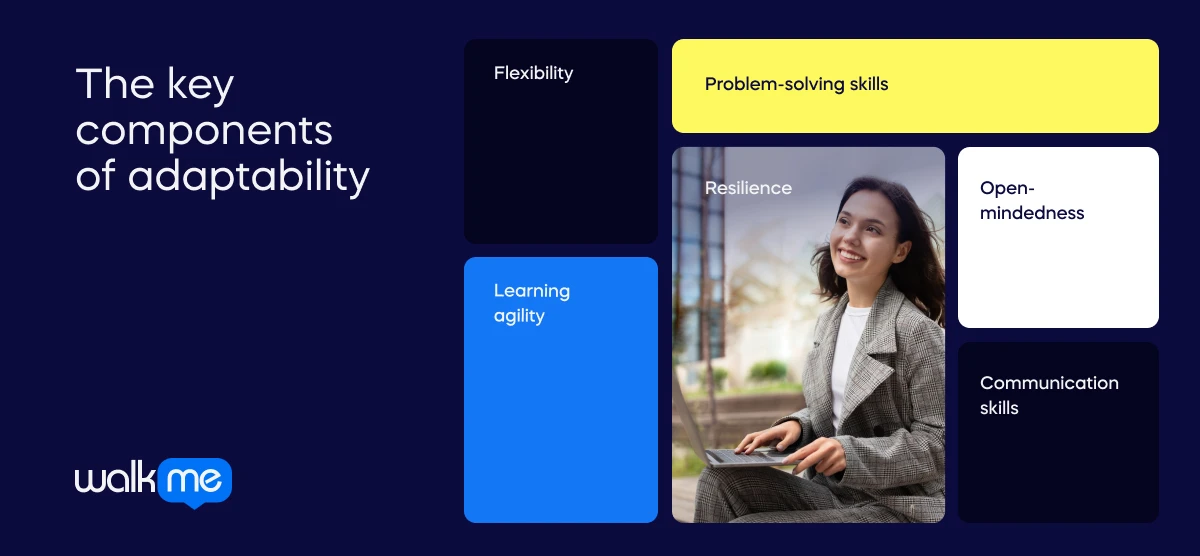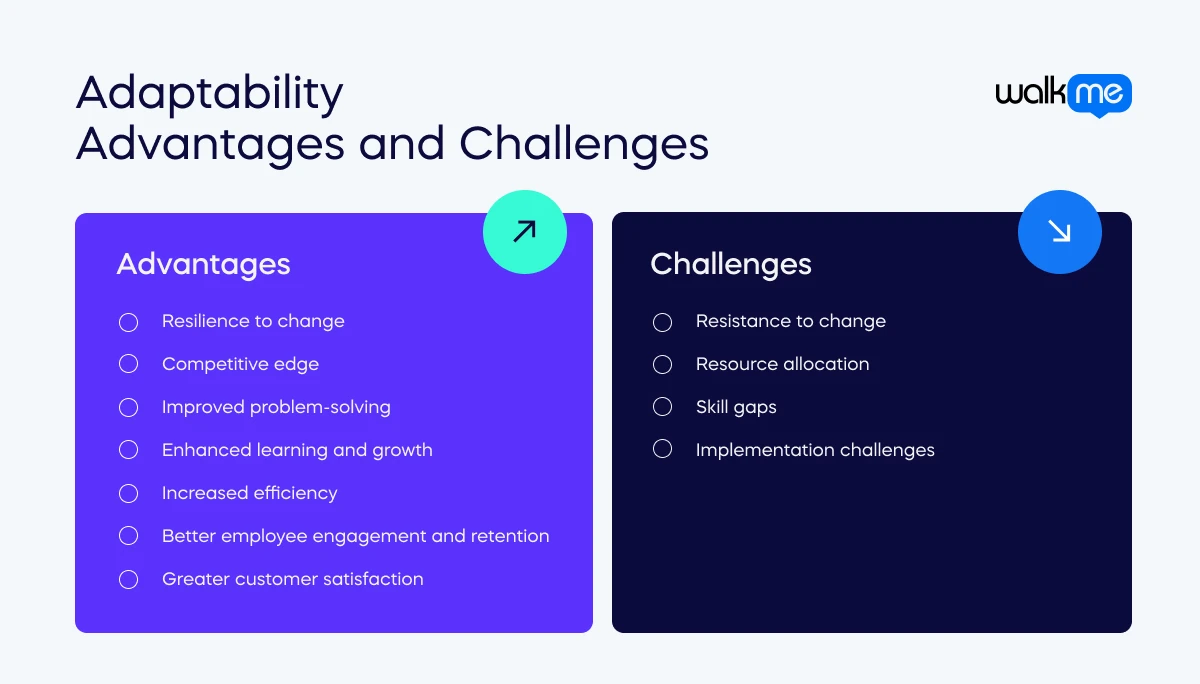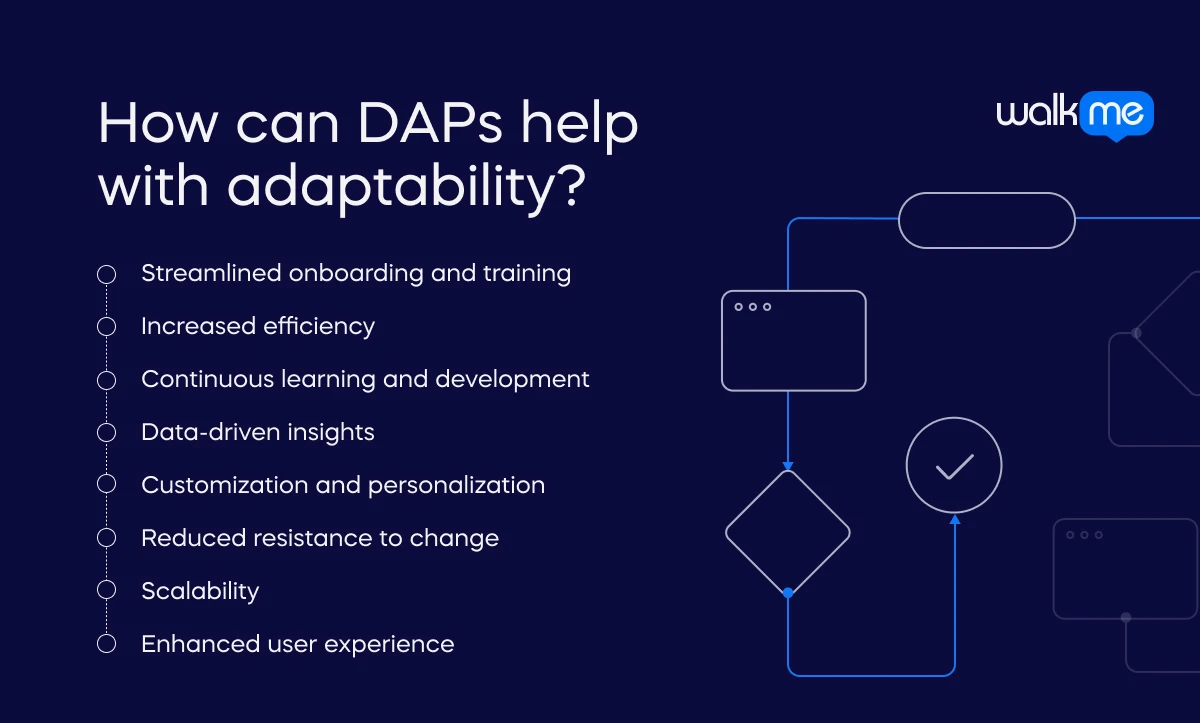What is Adaptability?
Adaptability is a prized soft skill in today’s job market. It is the ability to adjust to changing circumstances, conditions, or environments. This quality means more than just reacting to changes. It also means proactively gaining new skills to thrive in a changing world.

Table of contents
With fast technology changes and shifting economies becoming the norm, the ability to adapt is now essential for businesses and employees. All industries face unpredictability, including sudden market shifts and technology innovations. Adaptability helps people and organizations stay resilient and agile in such an environment.
Employees must be open to learning new technologies, embrace different work methods, and adjust to new team dynamics. For businesses, this involves pivoting strategies, innovating processes, and seizing emerging opportunities. A culture of adaptability helps organizations face unexpected challenges and keeps them competitive. Adaptability is not just about reacting to change but also about anticipating and preparing for it. This approach prepares people and organizations for uncertainty, leading to lasting success in a constantly changing world.
Companies should focus more on adaptability strategy. Gartner statistics reveal that “83% of CSOs say their sellers struggle to adapt to changing buyer expectations. Leaders are over-relying on individual sellers rather than building organizational adaptability. This overreliance on seller heroics contributes to 89% of sellers being burned out and struggling to perform.”
What are the key components of adaptability?

Adaptability can be complex. There are several skills needed to help people and organizations thrive in change. When these skills work together, they create a strong, adaptable framework. For example, Decathlon CEO Barbara Martin Coppa told McKinsey, “We’ve been able to thrive because of our ability to adapt to local markets. As a global business, we are very agile. We adjust to local demands in real-time.” Let’s look more closely at what is required for success:
Flexibility
At its core, adaptability means being open to change. It means altering one’s approach or mindset to new information or circumstances. Flexibility allows for adjustments in strategies, processes, and goals as situations evolve.
Learning agility
Learning agility refers to acquiring and applying new skills and knowledge quickly. It is key for adapting to new technology, methods, and industry changes. It involves a proactive approach to education and self-improvement.
Resilience
Resilience is the capacity to recover quickly from difficulties and setbacks. It includes maintaining a positive attitude, managing stress effectively, and persisting in facing challenges.
Problem-solving skills
Effective problem-solving is essential for adaptability. It means analyzing situations, finding solutions, and making changes to tackle unforeseen challenges. Strong problem-solving skills facilitate quick and effective responses to changing conditions.
Open-mindedness
Open-mindedness helps individuals and organizations embrace change and find innovative solutions. It also encourages collaboration and adaptability by valuing input from various sources.
Communication skills
Clear, effective communication is vital for adaptability. It ensures that changes and expectations are understood and managed. It also facilitates the exchange of ideas and feedback, which can be crucial during times of transition.
Adaptability vs flexibility
Both adaptability and flexibility are essential skills in a dynamic environment. However, they are quite different.
- Adaptability involves a broader, more strategic approach to long-term change and development.
- Flexibility focuses on making immediate, short-term adjustments.
Here is a more in-depth comparison:
| Adaptability | Flexibility | |
| Definition | The ability to adjust effectively to new, changing, or unforeseen circumstances by learning new skills, adopting new strategies, and modifying behaviors. It encompasses a broader, more proactive approach to handling change. | Refers specifically to the willingness and capability to readily change plans, schedules, or methods in response to new conditions. It is often more immediate and reactive compared to adaptability. |
| Focus | Long-term changes and developments. It involves continuous learning and evolution to keep pace with shifting environments, whether they are technological, economic, or organizational. | Short-term adjustments. It is about making quick changes in response to immediate demands or situations, such as altering a schedule or changing a work process on the fly. |
| Techniques | Continuous learning and development Embracing innovation and new technologies Strategic planning and foresight Developing resilience and coping mechanisms Encouraging open-mindedness and diverse thinking Ensuring long-term success and sustainability in a rapidly changing environment. | Implementing agile work methods Adjusting priorities as needed Quickly reassigning resources or tasks Effective time management Maintaining a willingness to change directions Handling immediate needs and challenges efficiently. |
| Goals | It aims to build a foundation to handle ongoing changes and challenges, ultimately leading to growth and resilience. | It seeks to minimize disruption and maintain productivity by quickly responding to short-term changes. |
| Examples of use | A company investing in employee training programs to keep up with technological advancements. An individual learning a new language or skill set to better fit into a new market or job role. An organization restructuring its business model to align with changing market conditions. | A project team adjusting its timeline to accommodate a client’s sudden change in requirements. An employee rearranging their work hours to better handle a temporary surge in workload. A manager reallocating team resources to address an unexpected issue or opportunity. |
Use cases for adaptability
Adaptability is crucial in a variety of business scenarios. It helps organizations to embrace new technology, expand into global markets, and restructure for economic changes. Furthermore, it keeps them resilient and competitive. Adaptability can be hard to grasp. Here are three examples to clarify it.
Technological upgrades and innovation
Adaptability within an organization is evident when it embraces new technologies, aiming to enhance productivity and maintain competitiveness. This often involves a shift from traditional development practices to adopting agile project management methodologies. The team must learn new tools, restructure workflows, and continuously update their skills. Adaptability improves efficiency and keeps the team ahead of industry trends.
Market expansion and diversification
Let’s look at an example of a retail business seeking to expand into international markets. The business demonstrates adaptability by modifying its products, marketing strategies, and operations to align with the cultural and regulatory landscapes of new regions. This involves adapting product designs to meet local tastes and adjusting supply chain management to ensure smooth operations. The business also works to understand and comply with foreign regulations. By making these adaptations, the business can tap into new revenue streams and reduce its reliance on a single market.
Organizational restructuring in response to economic changes
Let’s look at an example of a manufacturing company facing economic downturns. To maintain profitability, the company might demonstrate adaptability by restructuring its operations. This could involve diversifying its product lines to appeal to broader market segments, ensuring resilience in the face of shifting demand. The company might also implement strategic cost-cutting measures carefully designed to preserve the quality of its offerings. Additionally, the company could invest in retraining employees, enabling them to take on multiple roles and enhancing overall flexibility. By proactively adapting to the economic environment, the company secures its immediate survival and lays the groundwork for future growth when conditions improve.

What are the advantages of adaptability?
Adaptability offers many benefits, especially in today’s fast-changing business world. It gives people and organizations the tools to thrive in a changing world and ensures their long-term success and sustainability. Some of the key benefits include:
Resilience to change
Adaptable people and organizations can better withstand unexpected challenges. They can recover and ensure stability during upheaval.
Competitive edge
Adaptable businesses can stay ahead of their rivals by quickly adapting to new trends, technologies, and market demands. This allows them to seize new opportunities as they arise.
Improved problem-solving
Adaptability fosters a proactive, problem-solving mindset. It encourages creative thinking and innovation when faced with obstacles.
Enhanced learning and growth
Those who embrace adaptability are more likely to learn. This leads to better skills, knowledge, and growth.
Increased efficiency
Adaptable teams can boost efficiency by using new methods and tools. They can streamline processes and operations.
Better employee engagement and retention
Adaptable cultures often boost job satisfaction. Employees feel empowered and valued when encouraged to learn, grow, and help the organization succeed.
Greater customer satisfaction
Adaptable companies can better meet customer needs. They provide better service and build stronger relationships.
What are the challenges of adaptability?
Adaptability is very beneficial. But, it also presents challenges for individuals and organizations. Addressing these challenges requires thoughtful strategies, strong leadership, and a commitment to continuous improvement. Some of the key challenges include:
Resistance to change
Many people and organizations resist change. They are comfortable with routines and fear the unknown. Overcoming this resistance requires effective change management and communication strategies.
Resource allocation
Implementing changes often requires additional resources, such as time, money, and personnel. Smaller organizations with limited resources may struggle to balance these needs with ongoing operations.
Skill gaps
Adapting to new technologies or market demands often necessitates new skills and knowledge. Bridging these skill gaps through training and development can be time-consuming and costly.
Implementation challenges
Even with a clear plan, the practical aspects of implementing change can be complex. Coordinating different departments and managing timelines require careful planning. It’s crucial to ensure everyone is on the same page.
How can DAPs help with adaptability?

Digital adoption platforms (DAPs) can significantly enhance adaptability in various ways, providing the tools and support needed to navigate and embrace change effectively. They provide the necessary support, training, and insights to help individuals and organizations adapt quickly and effectively to new tools and processes. Businesses can enhance their adaptability by leveraging DAPs, ensuring they remain agile and competitive in an ever-changing landscape. Here are some key ways in which DAPs facilitate adaptability:
Streamlined onboarding and training
DAPs offer interactive and personalized training modules that help employees learn new software and systems quickly. This reduces the learning curve and enables faster adaptation to new technologies and processes.
Increased efficiency
DAPs help users perform tasks more efficiently by providing real-time guidance and support within applications. This reduces frustration and increases productivity, allowing teams to adapt to new tools and workflows seamlessly.
Continuous learning and development
DAPs support ongoing education by delivering updates and new training materials directly within the software. This ensures that employees stay current with the latest features and best practices, fostering a culture of continuous learning and adaptability.
Data-driven insights
DAPs provide analytics and usage data, helping organizations understand how employees interact with new tools. This information can identify areas where additional training is needed and measure the effectiveness of adaptation efforts.
Customization and personalization
DAPs can tailor training content to individual roles and skill levels, ensuring each user receives the most relevant and effective guidance. This personalized approach enhances the adaptability of diverse teams within an organization.
Reduced resistance to change
DAPs can mitigate resistance to change by simplifying the adoption process and providing clear, step-by-step instructions. Employees are more likely to embrace new tools and methods when they feel supported and confident using them.
Scalability
DAPs can scale to accommodate the needs of growing organizations, making it easier to onboard large numbers of employees to new systems simultaneously. This scalability ensures that adaptation efforts keep pace with organizational growth.
Enhanced user experience
With intuitive interfaces and context-sensitive help, DAPs improve the overall user experience. A positive user experience reduces frustration and promotes a more enthusiastic adoption of new technologies and workflows.
Frequently asked questions
Adaptability enables organizations to pivot quickly in response to disruption, ensuring continuity, faster adoption of new technologies, and sustained competitive advantage during large-scale transformation initiatives.
Adaptive leaders foster trust, navigate ambiguity, and empower teams through continuous learning—key traits for guiding organizations through complex, evolving change landscapes.
Resistance often stems from fear or unclear value. Address it with targeted communication, contextual training, and by aligning change with employee goals and workflows.
Regularly—especially before launching strategic shifts, adopting AI, or restructuring. Assessments help identify readiness gaps and tailor interventions to strengthen agility across teams.
They provide real-time, in-app support that reduces friction, accelerates skill-building, and empowers users to adapt seamlessly to evolving digital environments.